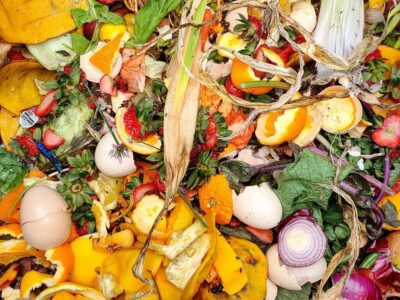Written by M.S. in Sustainability Management student Henry Gordon-Smith (’13)
Population growth and rapid urbanization have forced cities all over the world to prioritize the physical dimensions of sustainability. As a result, ‘green building’ has moved to the forefront of the sustainability industry. Globally, buildings consume more than 2/3 of all electricity and use about 40% of all resources[1]: the built environment therefore best represents how we interfere with the natural world, for we build up barriers, create infrastructure, construct shelter, and exploit finite resources in the process. We spend 90% of our time inside buildings[2], thus improving their construction and management is a crucial component of sustainable development, and, more subtly but perhaps more importantly, through their design buildings have the potential to communicate—to motivate and inspire their inhabitants to behave more sustainably.
Being able to model solutions visually is a critical component for managers’ intent for solving environmental problems. For that reason, perhaps, advancing the way we design the built environment has always been my keenest interest. Sustainable design requires more than just the ability to create spatially: it requires expansive considerations—materials, energy, water-use, financial feasibility, new technologies. It must successfully execute the maxim “form meets function”. For me, the physical dimensions of sustainability management are the bases from which I launch into finding innovative solutions to environmental concerns.
One project that taught me the critical relationship between form and function in sustainable design was a LEED project some fellow SUMA students and I designed. Our task was to create a LEED platinum dormitory for the Harbor School on Governor’s Island whose design had to satisfy the school’s objectives. As the new structure would be located on the island, waste, energy, and water-use reduction were priorities. After learning the necessary components for a building to meet LEED requirements we began conceptualizing the elements of the structure. As the architect for the team it was my job to represent the ideas that we developed visually. The collaborative aspect of the project was inspiring; we laid out the features our building should achieve—net zero, 400-student capacity, LEED compliance, food producing—and I would be charged to render a model to match our consensus. The first problem we faced was the dormitory for 400 students: it was much larger than we anticipated. By creating a to-scale design we were able to interact with our idea’s spatial presence; this allowed us to discern the massive footprint it would command. Passive design and solar placement—the placing of a structure in a way that makes the most of solar thermal gains—also influenced our plan. After five attempts we reached our final version. Our building made the best of solar thermal gains by implementing a south-facing greenhouse façade that trapped heat from the sun.


We named the building the Dormatrium, because within it was an open indoor space for the students that functioned as a passive climate controlled environment with cafeteria & lounge areas, and even a prefabricated sound-proof “study cube”. The building design was determined by the implementation of rainwater collection, wind power, and solar PV/thermal systems. This project was a cogent lesson of design’s vital aspect as sustainability managers, for it revealed the relationship between its adjustments and its effects.
In another course that focused on the physical dimensions of sustainability management we explored the science of sustainable water; we were charged with a group project to design a rainwater collection system for farmers in Guatemala. As we communicated with a local NGO and researched the elements of rainwater collection our design evolved. The first adjustment occurred when we learned that our target families were more concerned with gaining access to water for irrigation for their farms rather than domestic drinking water: this changed the scale of our design entirely. Other case-specific variables that transformed our design were a concern for the possibility of materials getting stolen and cost. Finally, our calculations were made to determine the space required to collect enough water to make a notable impact on our target farmers.

In the end, the design of our rainwater catchment was almost entirely dictated by function: it was modest in size, secure, and used inexpensive, local materials. Again, design was a fundamental aspect of our process that enabled us to identify deficiencies in the plan of our initial solution.
Design in sustainability management requires identifying areas of feasible innovation and being able to locate areas that can benefit with improvement. Using visual tools, sustainability managers must be able to forecast their solutions’ interaction with the environment. This does not necessitate that one ought to be an expert designer, but the ability to visualize prototypes is a fundamental element in the decision process, for it also stimulates quantitative and qualitative analysis: as we saw in the design for the school’s dormitory, for example, its visual display made it possible to draft a satisfying environment for the students (qualitative) and to achieve net-zero energy (quantitative).
The great advantage of the SUMA program is that it incentivizes group projects—as the two I have described in this article—which has a synergistic effect whilst drawing out the specific abilities of individual team members.
[1] Straube, John. “Green Building and Sustainability.” Buildingscience.com. Building Science Press, 24 Oct. 2006. Web. 21 Jan. 2013. Pg. 4
[2] ISIAQ-CIB Task Group TG 42. “PERFORMANCE CRITERIA OF BUILDINGS FOR HEALTH AND COMFORT.” Isiaq.org. International Society of Indoor Air Quality and Climate – ISIAQ, 2004. Web. 21 Jan. 2013. Pg. 3




I found this article inspiring. I got a sense of peace and gratitude that there are people training today to make a difference in the future. Good luck to the team where ever they end up working.
From my experience with persons who have participated in the MSc I can highly recommend it for people interested in gaining knowledge in the field with an aim to work in the industry. If I was a few years younger I would take the course.